Möchten Sie mehr Geschäfte abschließen? Probieren Sie diese cleveren Vorlagen für Follow-up-E-Mails für verschiedene Szenarien aus
Ah, E-Mail.
Whether you love it or hate it (just kidding, you probably hate it), it’s a necessary evil – especially in the world of sales.

Aber manchmal kann es schwierig sein, die richtige E-Mail zu versenden. Was soll man sagen? Und was noch wichtiger ist, wie soll man es sagen?
Crafting the perfect email can make or break your sales targets and your relationships with prospects. No pressure! 😅
But don’t fear, you’ve come to the right place.
We’ve put together some excellent email templates for you to use for your follow up! And to make it even better, we’ve categorized the email templates by different scenarios you face on a daily basis as a salesperson. 👍
Lesen Sie also weiter, um die richtige Vorlage für Ihre nächste Nachricht zu finden, und sehen Sie zu, wie die Geschäfte ins Rollen kommen. Sie können diese Vorlagen zusammen mit Ihren bestehenden Verkaufstools, Inhaltserstellern und Massen-E-Mail-Plattformen verwenden.
(By the way, if your current bottleneck is getting those first replies, here are the cold email templates that work for us. 💌)
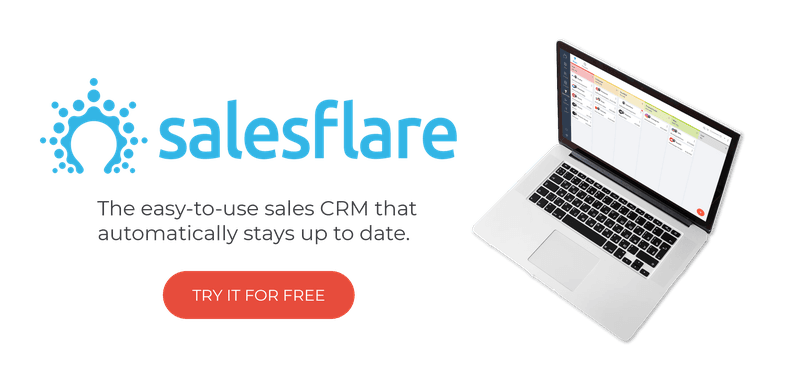
NEW: you can now save and use email templates within Salesflare (even with merge tags!). ✨ Lesen Sie alles darüber in dieser Produktaktualisierung.
Scenario 1 – They opened your initial email, but didn’t reply
Situation
Let’s say you sent a fantastic email to a lead – because of course you did – and they opened it, but then decided to not reply. ☹️
Es kann frustrierend sein, sich ignoriert zu fühlen, aber bleiben Sie positiv!
Maybe they forgot to respond or the email got lost in the shuffle…or maybe they just aren’t interested or your email went to the wrong person in the company. Until you know for sure, it’s always best to politely follow up.
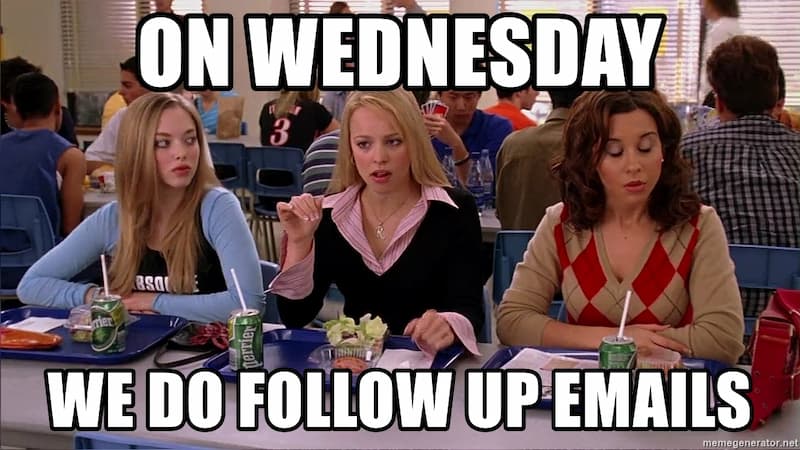
Keine Sorge, verwenden Sie diese E-Mail-Vorlage, um nachzufassen und zu versuchen, eine Antwort von ihnen zu erhalten.
Elemente der Nachricht
Achten Sie darauf, dass Sie diese angeben:
- Eine Erinnerung an die letzte gesendete E-Mail sie daran zu erinnern, warum Sie sich an sie wenden
- Eine höfliche Bitte um einen kurzen Anruf um das Interesse zu ermitteln und ihre Probleme besser zu verstehen
- Eine Bitte um ein Gespräch mit der richtigen Person in case the person you’re emailing ends up not being the appropriate person to talk to
E-Mail-Vorlage
Betreff: Rückmeldung zu: [kurzer Satz, der das Thema Ihrer letzten E-Mail abdeckt]
Hallo [Vorname],
I’m writing to follow up on my email regarding [what your last email was about].
I didn’t hear back from anyone on your team. If it makes sense to talk further, let me know how your calendar looks for the next few weeks for a 5-10 minute call.
Wenn nicht, wer ist dann der richtige Ansprechpartner für mich?
Vielen Dank für Ihre Hilfe. Ich freue mich darauf, von Ihnen zu hören!
Scenario 2 – You’re referred to someone else within a company
Situation
Let’s say someone gets back to you – perhaps from using the template in the first category – and they give you the contact details of someone else in the company who would be better suited to speak to.
Great! But now what do you say? 🤔
Elemente der Nachricht
Achten Sie darauf, dass Sie diese angeben:
- Eine Verbindung zurück zur ursprünglichen Person Sie haben sich an
- Ein spezifischer Schmerzpunkt für das Unternehmen und wie Ihr Produkt oder Ihre Dienstleistung ihnen helfen kann
- Eine Bitte um einen kurzen Anruf to discuss your solution further 📞
E-Mail-Vorlage
Betreff: Ich habe mit [Person, die Sie ursprünglich überwiesen hat] gesprochen
Hallo [Vorname],
Ich habe gerade mit [Person, die Sie ursprünglich empfohlen hat] gesprochen, der mich an Sie verwiesen hat.
Ich habe mich an [Person, die Sie ursprünglich empfohlen hat] gewandt, weil ich [Schmerzpunkt des Teams und Grund für den Schmerz] bemerkt habe.
[Kurze Beschreibung Ihrer Lösung und wie sie den Schmerzpunkt löst].
Könnten wir in der nächsten Woche einen kurzen 5-10-minütigen Anruf vereinbaren, um [Lösung] zu erkunden?
Ich danke Ihnen und freue mich, von Ihnen zu hören.
✨Tip: Be sure to CC the person you originally spoke to, so that it doesn’t look like a random cold email and gives you more credibility going into the conversation.
Scenario 3 – Someone asked you to follow up later
Situation
Let’s say you spoke to a prospect, but they said their company wasn’t ready to buy and asked you to come back to them “in a couple months.”
Thankfully, you can set a reminder in Salesflare so that you don’t miss your follow-up email moment (and you’ll have an automated timeline at your fingertips so you don’t forget what you talked about last time). 🤯
Die eigentliche Frage ist also, wie Sie sie wieder ins Gespräch bringen können.
Elemente der Nachricht
Achten Sie darauf, dass Sie diese angeben:
- Eine Erinnerung an das, was besprochen wurde in Ihrem letzten Gespräch
- Ein Angebot zur Beantwortung noch offener Fragen
- Eine erneute Bitte um Wortmeldung über die Lösung
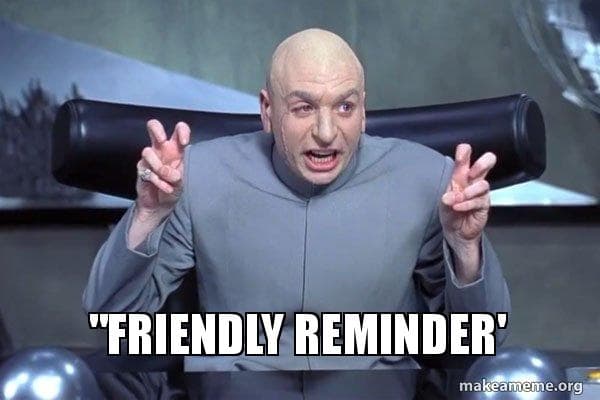
E-Mail-Vorlage
Thema: Bereit, das Gespräch fortzusetzen?
Hallo [Vorname],
Als wir das letzte Mal miteinander sprachen, baten Sie darum, dass ich mich in [gewünschter Zeitraum] bezüglich [beim letzten Mal behandeltes Thema] wieder melde, also wollte ich mich melden und dem nachkommen.
Hatten Sie schon Gelegenheit, meinen Vorschlag durchzulesen und darüber nachzudenken, was wir zuvor besprochen haben?
I’d be more than happy to do a quick recap of everything on the phone and to answer any pending questions you may have.
Wie sieht Ihr Kalender diese Woche für ein Gespräch aus?
Scenario 4 – Following up after an event
Situation
You met someone at an event, such as a conference or networking session, or at an office you were visiting, and you’d like to follow up with any business you discussed. 🤝
As it’s a mutual conversation, this should be a relatively easy response to receive – as long as you’re polite and get to the point of your message quickly.
Elemente der Nachricht
Achten Sie darauf, dass Sie diese angeben:
- Wie und wo Sie sie kennengelernt haben, da dies dazu beiträgt, dass sie sich daran erinnern, woher Sie sich kennen.
- Was wurde diskutiert, um zu zeigen, dass Sie sich für das, was die Person zu sagen hatte, interessieren und das Gespräch fortsetzen möchten
- How you’d like to move forward, as this is how you’re able to keep the conversation going
E-Mail-Vorlage
Betreffzeile: Schön, Sie bei [Veranstaltung/Ort] zu treffen
Hallo [Vorname],
Es war schön, Sie in [wo Sie sie getroffen haben] zu treffen.
Ich habe gerne gehört, was [besprochen wurde].
I think it would be great to chat further about [reason you’re interested in speaking further]. Do you have some time in the next few weeks? Let’s [action: meet for coffee, have lunch, plan a meeting, etc.].
Mein Terminkalender ist am [schlagen Sie ein paar Tage vor] weit offen, wenn Ihnen das auch passt?
Ich freue mich auf die weitere Diskussion!
Scenario 5 – After a call or meeting
Situation
You just had a call or meeting with a potential customer – yay! 🎉
But…now what?
Naturally, it’s time to send a follow-up email.
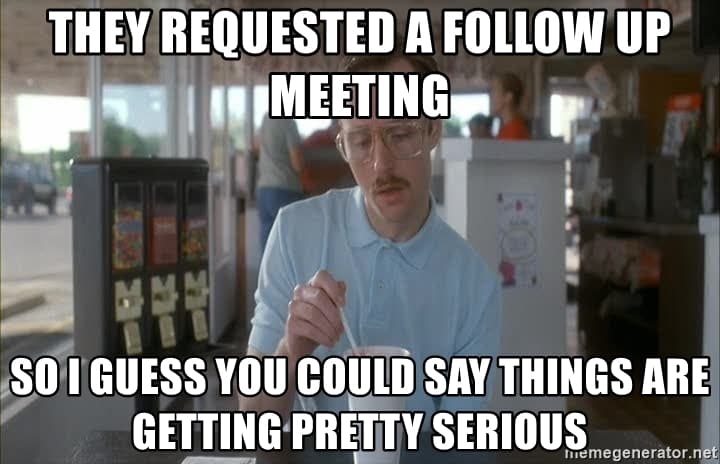
Elemente der Nachricht
Achten Sie darauf, dass Sie diese angeben:
- Eine höfliche Einführung ihnen zu sagen, wie sehr es Ihnen gefallen hat, mit ihnen zu sprechen
- A reference back to the pain points they’re facing
- Weitere Informationen on how your solution can help them (don’t forget any attachments!)
- Eine Erinnerung an eventuelle Folgemaßnahmen bereits vereinbarte Treffen oder Anrufe
✨Tip: Be sure to schedule a follow-up meeting or call while you’re speaking to them the first time, so that you can keep the conversation going.
E-Mail-Vorlage
Thema: Schön, Sie kennenzulernen!
Hallo [Name],
Es war toll, vorhin mit Ihnen zu sprechen und mehr über Sie und Ihre Rolle bei [Unternehmen] zu erfahren.
I now understand the issues you’re encountering with [a pain point discussed in the meeting] and how it can make it harder to [whatever the pain point prevents them from doing].
As discussed, I’ve attached some more information about our solution and how we can help you with [pain point] and solve [specific business issue].
Please do let me know if you have any questions and I’d be happy to chat again. If not, I look forward to talking again on [predetermined meeting day/time].
Scenario 6 – After a trigger
Situation
Let’s say you notice on Salesflare that someone keeps visiting your website or a specific product page. 🧐
Maybe they’re interested in what to offer, and just need an extra push.
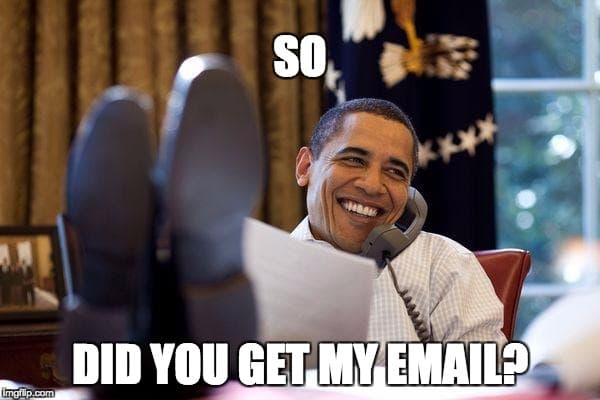
Note that this template can be adapted for just about any trigger event – such as downloading a whitepaper from your website or a specific promotional email that is opened multiple times. 📬
Elemente der Nachricht
Achten Sie darauf, dass Sie diese angeben:
- Das spezifische Produkt oder die Seite damit Sie die Erinnerung an das Gesehene schnell auffrischen können
- Ein direkter Vorschlag für einen Folgeanruf – requesting a low commitment call of 5-10 minutes offers them a chance to learn more and gives you the chance to understand what they’re looking for (and whether your product or service is right for them)
E-Mail-Vorlage
Betreffzeile: Demonstriertes Interesse an [Bestimmtes Produkt oder Seite auf Ihrer Website]
Hallo [Vorname],
Mir ist aufgefallen, dass sich einige Leute aus Ihrem Team diese Woche unsere Seite [Name des Produkts/der Seite] angesehen haben, die sich mit [Beschreiben Sie die Seite und die Funktion des Produkts] befasst.
Haben Sie 5-10 Minuten Zeit, um zu besprechen, welche Lösungen Sie und Ihr Team erforschen? Wenn ja, wie sieht Ihr Kalender diese Woche aus?
Passen Sie auf sich auf!
Scenario 7 – Sending a cold email to a prospect
Situation
As I’ve mentioned in a previous blog, try to warm up to contacting prospects directly before sending them an email.
Some suggestions for warming up to an email: commenting on something interesting they post on LinkedIn, retweeting something they’ve tweeted, etc.
Be sure to do this in a thoughtful and strategic way. But surely, as a salesperson, you already know this. 😉
You’re trying to build a relationship with these companies, so approach it in the same way you would want to be approached — in a more organic, thoughtful way. 💛
Elemente der Nachricht
Achten Sie darauf, dass Sie diese angeben:
- Eine kurze Vorstellung von Ihnen und Ihrem Unternehmen
- Ein stichhaltiger Grund für die Kontaktaufnahme und ein klares Ziel für Ihre Botschaft
- Eine Bitte um weitere Gespräche sowie die Bitte, mit einem ihrer Kollegen zu sprechen, wenn sie nicht der richtige Ansprechpartner sind
E-Mail-Vorlage
Thema: Gerne helfe ich bei [Lösung]
Hallo [Vorname],
My name is [Your name] and I’m part of the business development efforts with [Your company]. [Quick one-to-two-sentence pitch that explains what your company does].
Auf der Grundlage Ihres Profils [Kanal: LinkedIn, Twitter, etc.] scheinen Sie eine geeignete Person zu sein, um sich mit mir bezüglich [Lösung] in Verbindung zu setzen.
I’d like to talk to someone from [Their company] who is responsible for [Department/role of people who would use your solution].
If you’re who I should speak to about this, are you open to a 5-10 minute call this week, such as [suggest a few dates/times], to discuss the ways [Your solution] can specifically help your business?
Wenn nicht Sie, könnten Sie mich bitte mit der richtigen Person in Verbindung setzen?
Vielen Dank und ich freue mich, von Ihnen zu hören!
✨Tip: Add a testimonial link to your signature, as it gives you more credibility and social proof to those you email (and you can track whether or not they’ve clicked it!). It’s also a good idea to add a link to your LinkedIn profile so that they can easily answer the question, “Who is this person?”
Sending hundreds of emails can sometimes feel a bit daunting, but hopefully this guide can take a bit of the pressure off! 😁
Plus, many of your email processes can be automated – if you’d like to learn more about following up with automation, check out this handy guide.
Happy emailing! 📧
Möchten Sie mit der Verwendung dieser Vorlagen beginnen?
Vorlagen zu haben ist großartig, sie aber immer wieder aus einer zentralen Datei in Ihre E-Mails zu kopieren, ist weniger gut.
That’s why we, at Salesflare (yup, this is our blog, and we offer an easy and automated CRM to SMBs selling B2B), have built a cool feature that allows you to:
- diese Vorlagen speichern
- teilen Sie sie mit Ihrem Team
- and use them straight from Gmail or from Salesflare’s CRM itself
Das Einfügen von einer Vorlage dauert nur eine Sekunde!
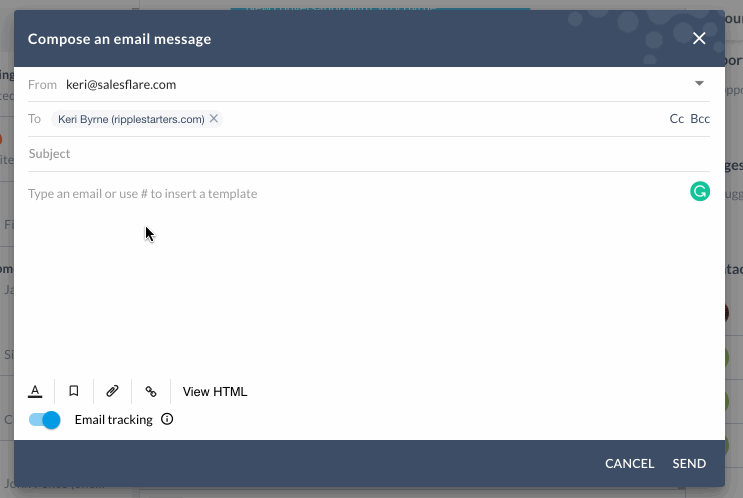
Or, if you’re finding yourself using these templates over and over again to follow up with a list of people, you can take your automation even further and set up sequences of emails with Salesflare’s email workflows.

Senden Sie automatisierte und personalisierte E-Mail-Sequenzen an potenzielle Kunden, die so lange gesendet werden, bis sie antworten (oder auf Ihre E-Mail klicken oder sie öffnen) und es so aussieht, als hätten Sie sie selbst manuell gesendet. Hier sind einige Workflows für kalte E-Mails, mit denen wir gute Ergebnisse erzielen.
Erhalten Sie genaue Analysen zu Öffnungsrate, Klickrate, Antwortrate und mehr. Setzen Sie Ziele für Workflows, automatisieren Sie die E-Mail-Sequenz und lassen Sie die Zahlen selbst berechnen!
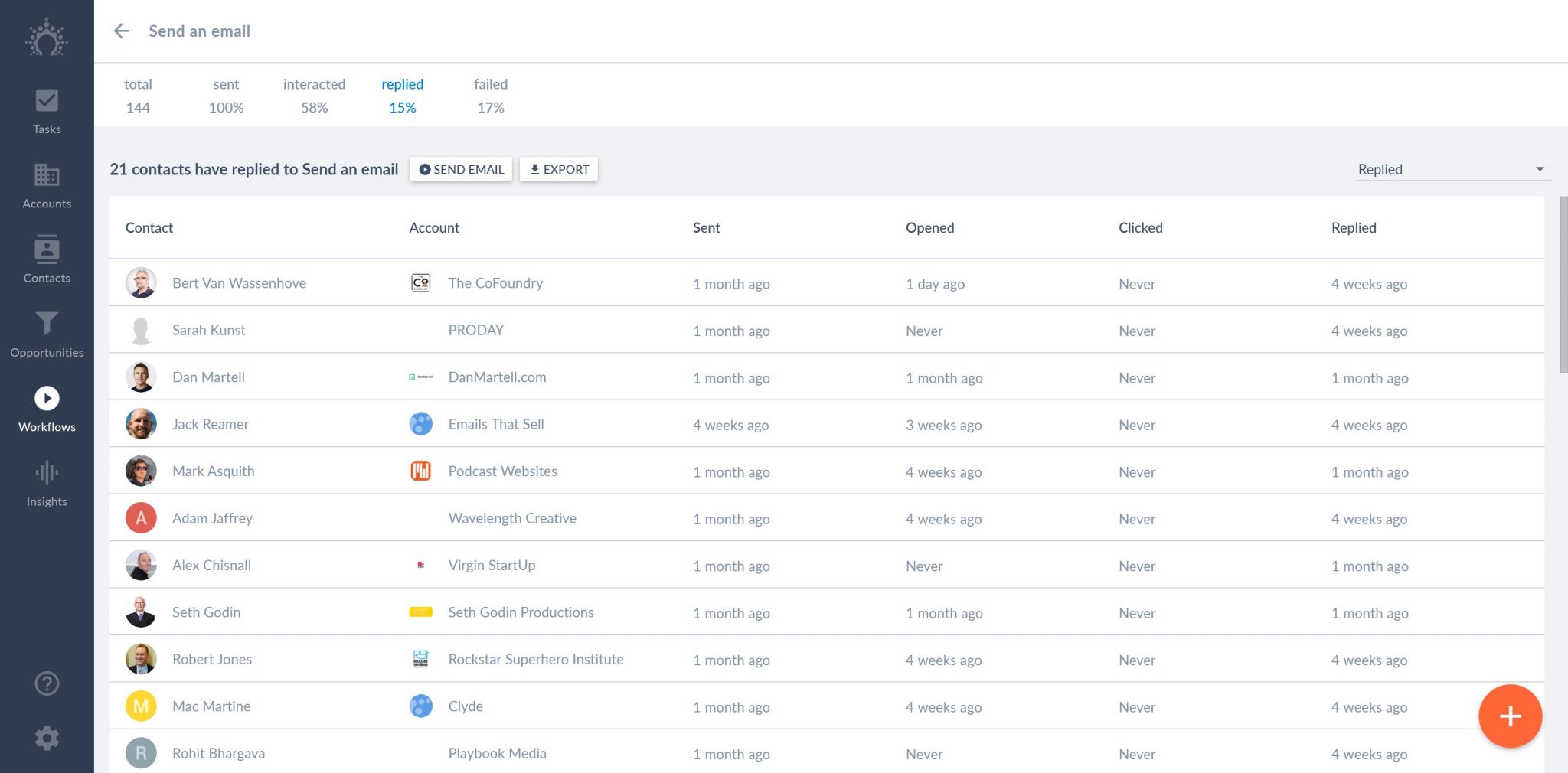
You can even see which emails work best and which ones don’t reach your goals, so you can go back and improve to get even better results.
The email automation in Salesflare is powerful. If you don’t trust me, Probieren Sie es selbst aus oder einige unserer Kunden zeigen ihre E-Mail-Workflows Erstens.
- 22+ Beste Vertriebs-Podcasts, die Sie sich 2024 ansehen sollten - 21. Dezember 2023
- Cold-Calling-Skripte für echte Menschen - 21. September 2023
- Die 25+ besten Verkaufstools, die Ihr Team erfolgreich machen - 10. August 2023
